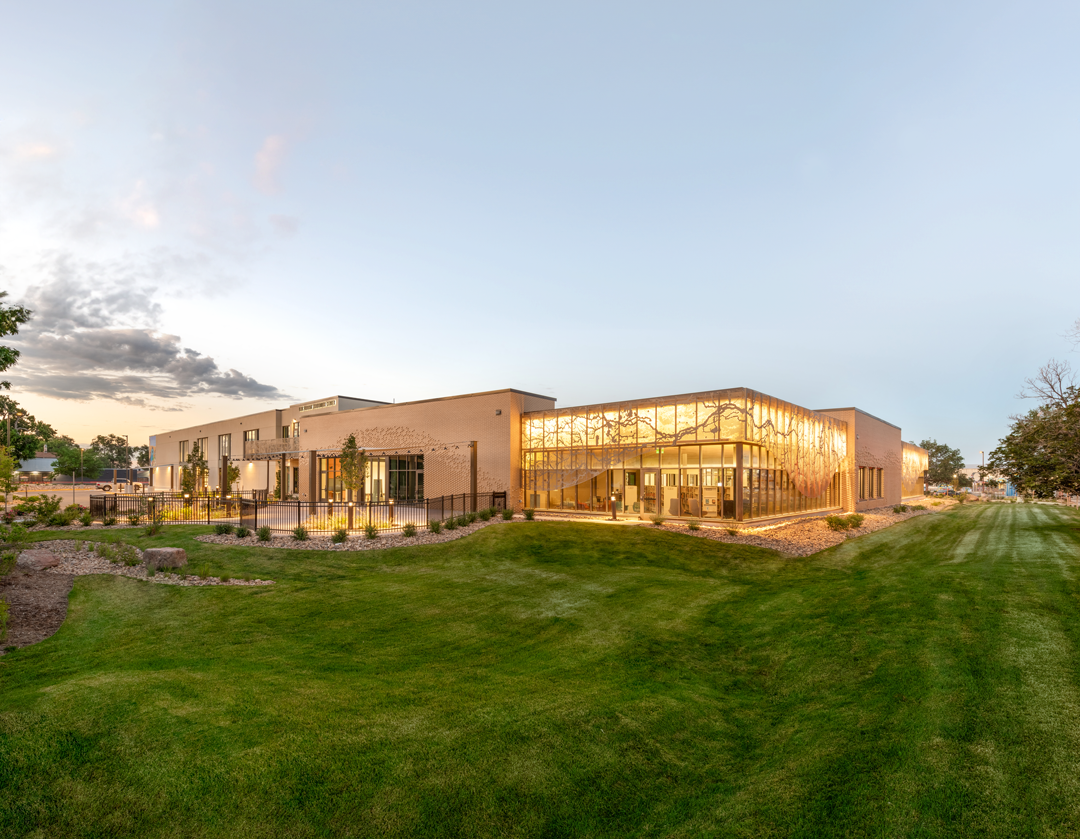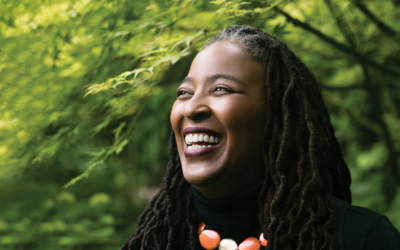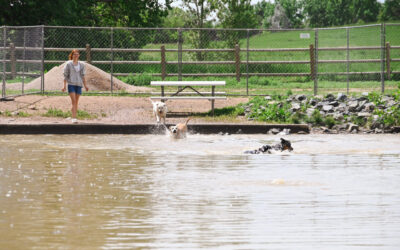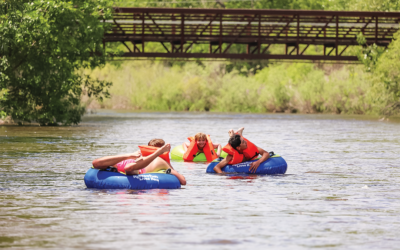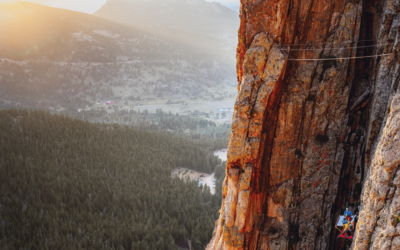Matthew Hortt outfitted Greeley’s new $31 million library with a woodshop, recording studio and genealogy department. He stocked it with 3D printers, 60 computers and lots of books. He even spruced it up with an enclosed atrium and a breathtaking installation by world-renowned artist Wes Bruce. He was so taken with the installation that he called LINC Library the “Meow Wolf of libraries.”
Then he began to worry. Would anyone show up?
“It’s always the worry when you put something like this out there,” says Hortt, executive director of the High Plains Library District, nearly a year after the May 2023 opening. “You think you have all of it, but if it had flopped, it would have been bad.”
If that seems silly now, when no one would say LINC was a flop, consider that the 62,000-square-foot building is unlike any other library in the state. Hortt isn’t sure there’s anything like it in the country, and not just because of the art installation.
Other libraries have bits and pieces of LINC’s features (recording studios are popular, for instance). But LINC also offers hands-on ways to experience the trades and earn certifications that could lead to apprenticeships in well-paying industries experiencing worker shortages.
“You do see technology and arts and crafts in other places,” says Diane Lapierre, executive director of the Poudre River Public Library District, “but not the industrial type stuff.”
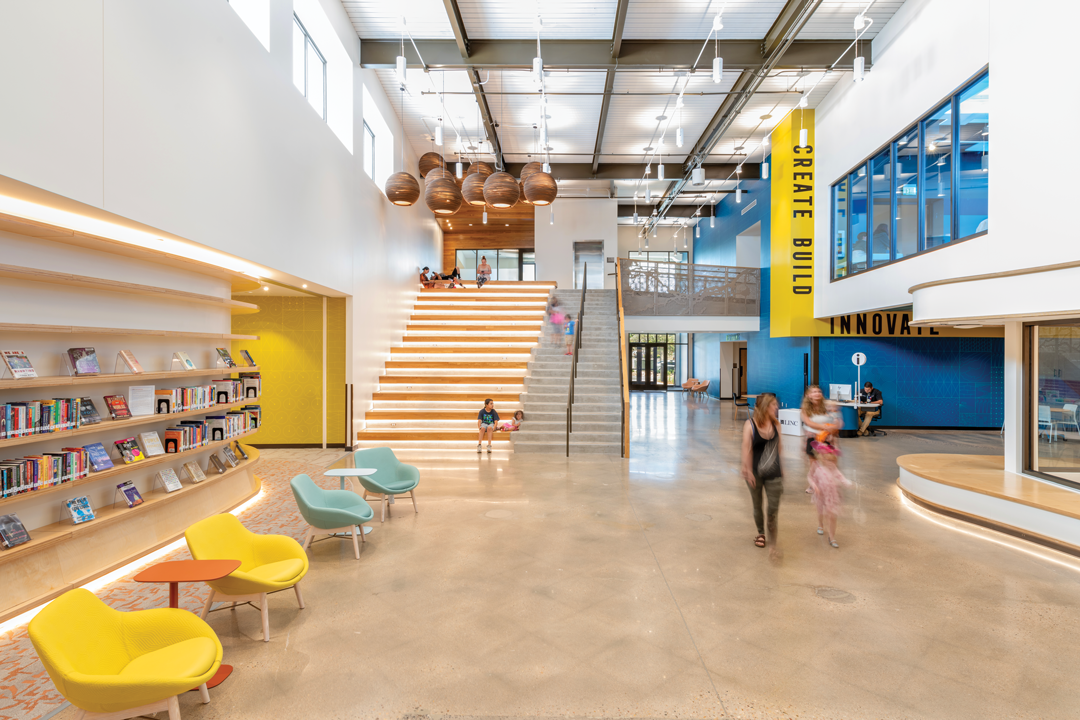
Photos by The Unfound Door.
A trade-off
The district board may have hired Hortt on the promise of delivering a state-of-the-art downtown library, but that hinged on the community’s interest in using it. Hortt was confident that he could provide what the community had been asking for, and soon after he was hired, he began working with focus groups and conducting surveys. Greeley-Evans School District 6 emphasized the need for in-depth trade instruction.
“Historically, these were skills that were passed down through the family, and they aren’t anymore,” Hortt says. “The question was, ‘How can the library help with that?’ We wanted to take those same resources and make them available, so you don’t have to purchase heavy equipment. You can utilize them here.”
That includes tools and machinery, like table saws, laser engravers and die-cut machines, Hortt says, as well as VR headsets that allow you to “test” hundreds of tasks, like changing the oil in a car.
“Libraries aren’t just places to read,” Hortt says. “They are places to explore.”
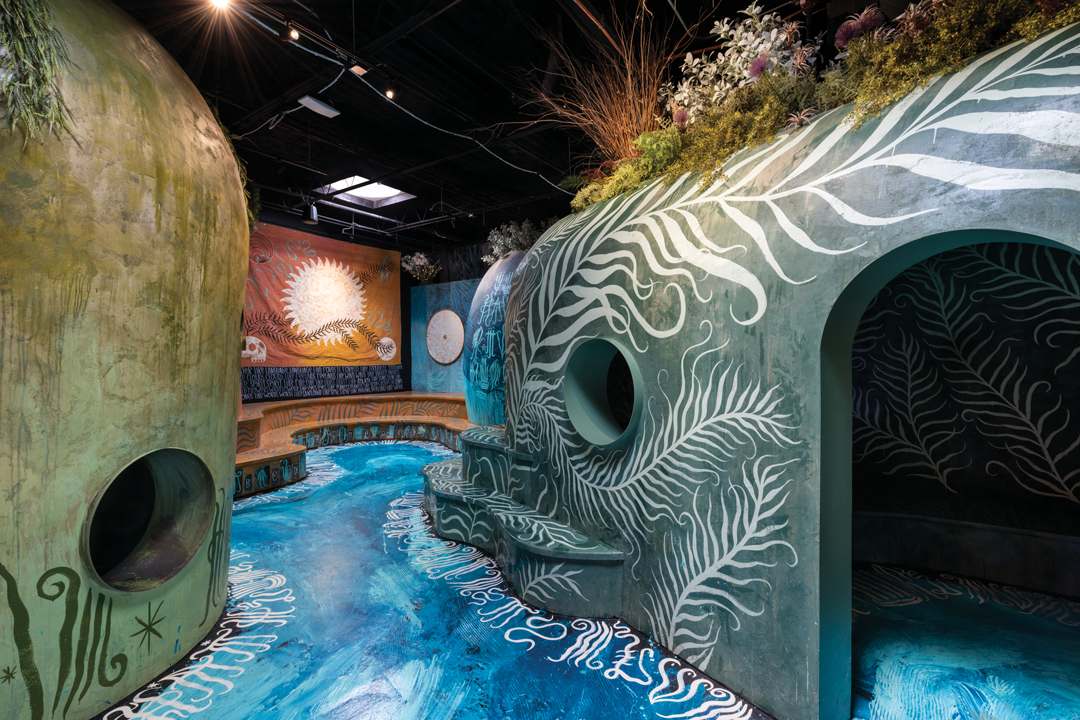
“Where Water Flows Uphill” installation by Wes Bruce.
Offering ways to test so many jobs, and finding space for them, wasn’t easy. Hortt and his team had to figure out how to prevent the noise in the woodshop from bleeding into the recording studio across the hall. They also wondered if they should buy the best equipment or provide cheaper models for people to try.
For many pieces of equipment, such as the 3D printers, they opted for something in between. That way, people could learn the basics and maybe an advanced trick or two, but not everything they’d need to know on the job. There are exceptions for in-depth programs, like the woodworking certificate.
“If students want something more technical than the basics, we can send them to Aims [Community College],” Hortt says. “We don’t want to be in competition, but maybe we can give the students a warm handoff.”
By the end of the year, Hortt plans to add a paint booth to demonstrate what’s involved in painting cars or houses as a profession as well as a space for welding instruction and a T-shirt printing shop.
Of course, libraries are also a place for reading, and residents should continue to use them as sources of information and intellectual entertainment.
“I don’t think we will ever get away from books,” Hortt says. “If my kids want to read, they want a book. If they see a tablet, they want to play a game.”
The pretty and the practical
Among the library’s 100,000 books, DVDs and other materials, there’s an atrium surrounded by glass. It has an indoor/outdoor fireplace, live trees and seating areas with natural light flooding through the large windows. It’s warm, even in the winter.
If you’re meeting friends or need to get down to business, you can reluctantly leave the atrium and head to one of the five study areas, four meeting rooms or two collaboration spaces. There are two classrooms for businesses, organizations and anyone else to use as well. One of Greeley’s larger venues is also located at LINC Library, with two projectors, large screens, a stage and enough space to accommodate nearly 200 people.
The library blends the pretty and the practical. The “Where Water Flows Uphill” installation by Bruce, a former Greeley resident and renowned artist, is a perfect example.
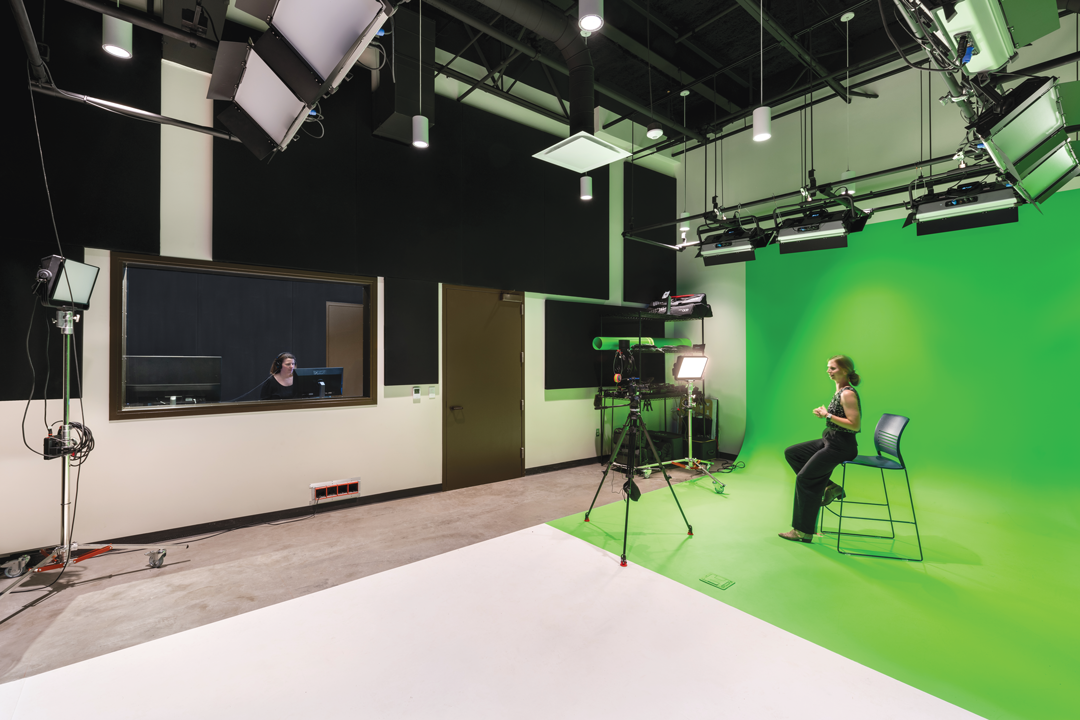
The recording studio (top) at LINC Library.
Bruce was recruited by a partnership between the Weld Community Foundation and the library district. He spent hours next to the Poudre River, the inspiration for the installation, to capture its essence before starting construction. It’s an installation, not a painting, per se, so patrons are welcome to touch it, climb over it and read it.
“There are qualities that art draws out of people,” Bruce said in a video posted on mygreeley.com, a project of the City of Greeley. “It gives them a bucket to go down into a well. It’s like we are giving them a bucket and saying, ‘Take this. Go down to the depths. See what you bring out.’”
The installation invites creativity and play, and LINC delivers with workbenches to make art, a giant Lite Brite (IYKYK) and a paper airplane “airport” that allows patrons to build a plane, launch it and measure how far it goes.
LINC will be the district’s centerpiece for a long time, and that initially worried Hortt, as he didn’t want the district, which includes all of Weld County, to think that he only cared about Greeley. But it’s the place that contains most of his vision of what a library can be, now and in the future.
“This is the test location of sorts,” Hortt says, “but it’s also the place where people want to be.”
_____________________________________________________________________________
More Places to Explore
There are plenty of other places for kids and families to have fun learning, playing and discovering new things in Northern Colorado, including:
Fort Collins Museum of Discovery. Exhibits encourage exploration, including a music and sound lab, a STEM zone full of scientific concepts in action, a fossil wall, animal encounters, a toddler-friendly “Tot Spot” with a water zone, giant crawl-through tree and train table and lots of other attractions.
Colorado Model Railroad Museum. Rated as one of the top model railroads in the world, the museum is the second largest of its kind. The display is surrounded by miniature snapshots of life back in the day.
The Farm at Lee Martinez Park. Introduce kids to agricultural heritage by meeting farm animals up close and going on a pony ride.
The Poudre Learning Center. The center educates kids about the watershed and wildlife habitat that surrounds the Poudre River.
TGP Library at Foothills. This library loans out toys, games and puzzles for a membership fee or volunteer hours.
The Environmental Learning Center. A 212-acre nature preserve that features three miles of trails, four habitats, several ponds and lots of plants and animal life to discover.
The Children’s Museum of Northern Colorado (coming soon). The museum will have playful, hands-on learning opportunities geared toward children ages 10 and under. Follow the museum on Facebook for updates.
_____________________________________________________________________________
Another Library in the Works
The Poudre River Public Library District has plans to build a library and a pool in one building in southeast Fort Collins, less than a mile away from the Council Tree Library, which the center will replace. Lapierre, the district’s executive director, knows that libraries and swimming pools usually don’t mix. So, allow her to joke for a second.
“I was hoping a lazy river could go through our children’s library,” she says and laughs.
That won’t happen, but the district has an opportunity to build something every bit as innovative as the LINC Library, just in a different way. The southeast community innovation center—which won’t be its final name—“does present all sorts of interesting possibilities,” Lapierre says.
The library is a partnership between the district, Fort Collins’ recreation department and the Poudre School District. The partnership allows the district some additional space and to feature things they couldn’t have on their own, Lapierre says. It’s possible that it’ll have a 10-lane lap pool and other fun aquatic things, like water slides. There will be plenty of room for the library as well: At an estimated 30,000 square feet, it will be double the size of Council Tree.
The district doesn’t know what it’ll look like yet, though innovation, as the name implies, is expected. Construction isn’t expected to begin until 2025. The district wants to hear from residents before it starts building.
“We can think about what this community needs and figure out the best way to fill this wonderful space,” Lapierre says.
There aren’t many instances of centers like the one Fort Collins is planning, though Canada has some good examples, she says.
Lapierre doesn’t have much of a timeline for the project yet, but she hopes to have approximate dates once she hires a project manager, which should be fairly soon. She wants to get things going, but she also reminds people that it’s the first one built in the district since Council Tree opened in 2009.
“This is the first project we’ve had in a long time,” Lapierre says. “I don’t know exactly how long it will take us to get it all together.”


